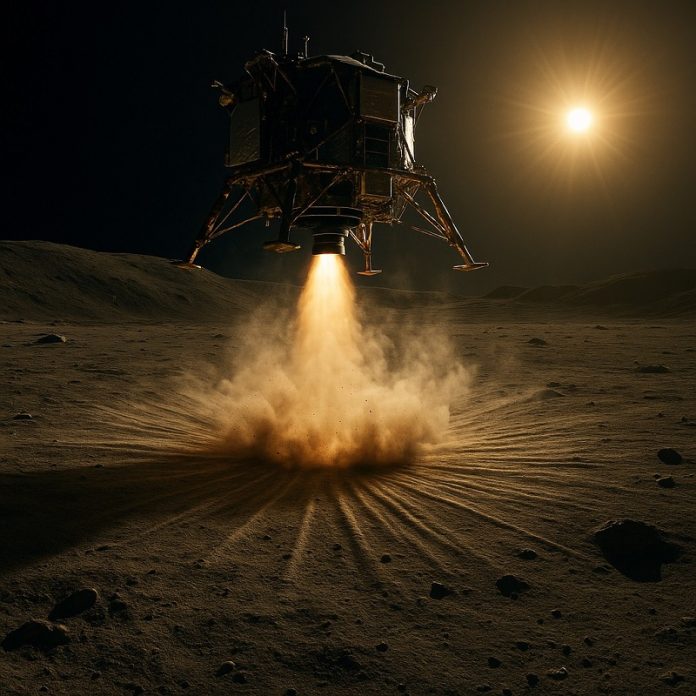
Scientists have finally solved a long-standing mystery about the strange patterns of dust left behind by rockets landing on the moon.
These patterns, which appear as streaks radiating out from the landing site, have shown up in many lunar landings over the years.
Now, researchers from NASA, Johns Hopkins University, and the University of Michigan have figured out why—and the answer could help make future moon missions safer.
When spacecraft land on the moon, their engines blast the surface with powerful jets of gas. This causes dust and small particles to fly into the air.
While this has been known for decades, the repeated appearance of the same streak-like patterns puzzled scientists.
Why did these marks always look so similar, regardless of where the landings happened?
As it turns out, the answer lies in how the rocket’s exhaust interacts with the moon’s surface, especially in the moon’s unique environment. Unlike Earth, the moon has almost no atmosphere. This near-vacuum condition changes the way gases behave.
The research team discovered that a special fluid dynamics effect called Görtler instability is responsible for the streaks.
This phenomenon causes swirling patterns—known as vortices—to form in the gas jets when they flow along a curved path near the surface. These vortices carve streaks into the dust.
To study the effect, scientists at Johns Hopkins set up a detailed experiment at NASA’s Marshall Space Flight Center. They built a 15-foot vacuum chamber to recreate the moon’s low-pressure environment and used six high-speed cameras to capture how jets of gas affected simulated lunar soil. While the cameras clearly showed streak patterns on the surface, they couldn’t see the gas flow above it, where the patterns likely began.
That’s where the University of Michigan team stepped in. Using a powerful supercomputer called the Great Lakes HPC cluster, they ran complex simulations of rocket plumes to see what was happening in the gas before it touched the surface.
Their models showed swirling vortices forming in the exhaust jet—just as predicted by the theory of Görtler instability. Even more impressively, the number of these vortices matched the number of streaks seen in real moon landing images.
The findings also revealed that pressure plays a key role. On planets like Mars, which has a higher atmospheric pressure than the moon, the rocket jets act more like focused beams—similar to a lightsaber—and dig deep craters without creating the same kind of streaks. On the moon, where pressure is extremely low, the jets spread out more and cause the surface dust to erode in a streaky pattern instead.
These insights aren’t just interesting for scientists—they’re crucial for space missions. Understanding how dust behaves during landings can help engineers design better spacecraft and predict how particles will move. This is especially important because flying dust can damage equipment and reduce visibility during landings.
As U-M professor Jesse Capecelatro explained, spacecraft design isn’t something you can guess through trial and error.
By proving that the theory explains the dust streaks, researchers can now use computer simulations with more confidence. That means safer landings for future astronauts and robotic missions alike.



